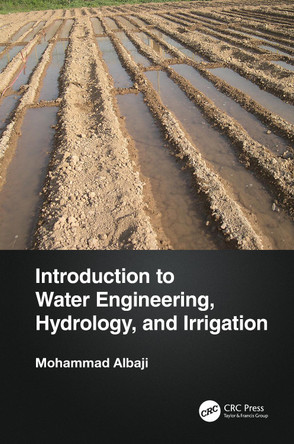Description
Due to its height, density, and thickness of crown canopy; fluffy forest floor; large root system; and horizontal distribution; forest is the most distinguished type of vegetation on the earth. In the U.S., forests occupy about 30 percent of the total territory. Yet this 30 percent of land area produces about 60 percent of total surface runoff, the major water resource area of the country. Any human activity in forested areas will inevitably disturb forest floors and destroy forest canopies, consequently affecting the quantity, quality, and timing of water resources.
Thoroughly updated and expanded, Forest Hydrology: An Introduction to Water and Forests, Third Edition discusses the concepts, principles, and processes of forest and forest activity impacts on the occurrence, distribution, and circulation of water and the aquatic environment.
- Brings water resources and forest-water relations into a single, comprehensive textbook
- Focuses on the concepts, processes, and general principles in forest hydrology
- Covers functions, properties, and science of water; water distribution; forests and precipitation, vaporization, stream flow, and stream sediment
- Discusses watershed management planning and practical applications of forest hydrology in resource management
In a single textbook, Forest Hydrology: An Introduction to Water and Forests, Third Edition comprehensively covers water and water resources issues, forest characteristics relevant to the environment, forest impacts in the hydrological cycle, watershed research, watershed management planning, and hydrologic measurements. With the addition of new chapters, new issues, and appendices, this new edition is a valuable resource for upper-level undergraduates in forest hydrology courses as well as professionals involved in water resources management and decision-making in forested watersheds.
About the Author
Mingteh Chang, PhD, is Regents Professor of Forest Hydrology and Professor Emeritus within the Arthur Temple College of Forestry and Agriculture at Stephen F. Austin State University in Nacogdoches, Texas.
Reviews
"The third revised edition offers exhaustive information regarding
concepts, processes and fundamental principles of forest hydrology.
This publication discusses functional properties, distributions of
water, forests and precipitation, humidity, runoff, soils and
sedimentation and also research approaches in the forest and water. In
addition, the watershed management and practical applications in forest
hydrology and water recourse managements are also discussed in this
book."
-Nachrichten, Neue Publikationen,2013
Praise for the First Edition
A textbook for most forest hydrology courses should not only cover topics on forest impacts on water but also provide the basics of water properties, movement, and storage in the atmosphere, soil matrix, and surface water bodies. Putting both major topic areas in one manageable textbook requires trade-offs that do not dilute either subject area too much, but rather skillfully blend the two together. Mingteh Chang has done just that in writing this book.
-Richard C. Schultz, Professor of Forest Hydrology and Ecology, Iowa State University, in Forest Science, Vol. 49, No. 2
The book can be used as a text for students in agriculture, forestry, and land-resources management, and as a reference for foresters, rangers, geographers, watershed managers, biologists, agriculturalists, environmentalists, policy makers, engineers, and others who may need such background in their professions.
-Falhry A. Assaad, Consultant, Geologist, and Data Analyst
Book Information
ISBN 9781439879948
Author Mingteh Chang
Format Hardback
Page Count 598
Imprint CRC Press Inc
Publisher Taylor & Francis Inc
Weight(grams) 1270g






